The Hackettstown Hatchery’s busy trapnetting season kicks off with the melting of ice on lakes and reservoirs in mid-March and runs through the end of April. The open water allows hatchery technicians to set trap nets for the collection of northern pike, muskellunge and walleye broodstock. The eggs from these fish are hatched in incubators and the fry raised to fingerling size (up to 10″) for stocking in public waters.
Broodstock collected during the trap netting season are brought back to the hatchery where the spawning operations take place. Upon arrival the fish are separated by gender (male and female) and ripeness (degree of egg development). Also during their short stay at the hatchery information such as length, weight and any fish markings, such as fin clips or tags, are recorded.
The fish will be returned to the their respective body of water after spawning operations are completed.
At the hatchery the fish will be anesthetized (put to sleep) by adding the drug tricaine to a tub of water and placing the fish in the tub. The fish are then manually stripped of their eggs and milt (fluid containing sperm) which are mixed into a bowl. This allows fertilization to occur. The fertilized eggs are then water-hardened, counted and measured into hatching jars. Eggs will hatch in 10-15 days.
For accounts of the past few years’ broodstock collection see the links on the Hackettstown Hatchery page. For enlarged photos of the thumbnails below, click on the image.
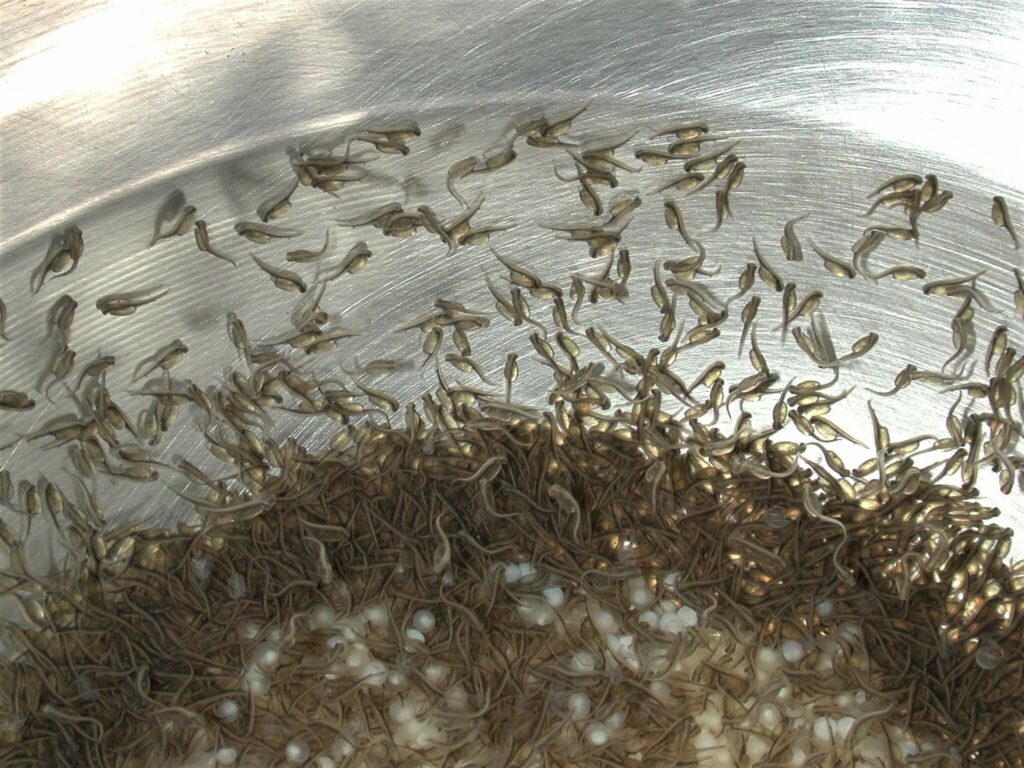
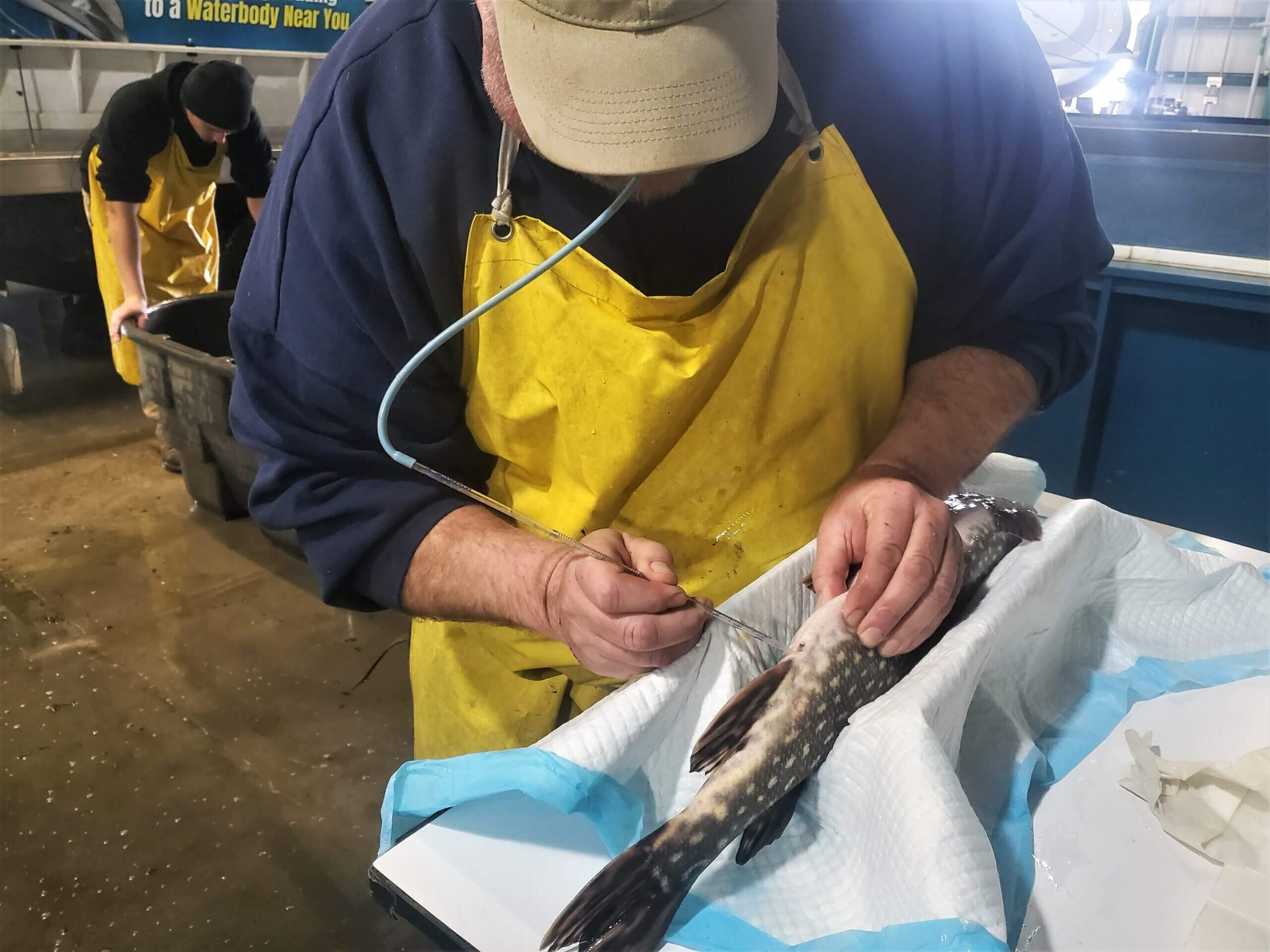
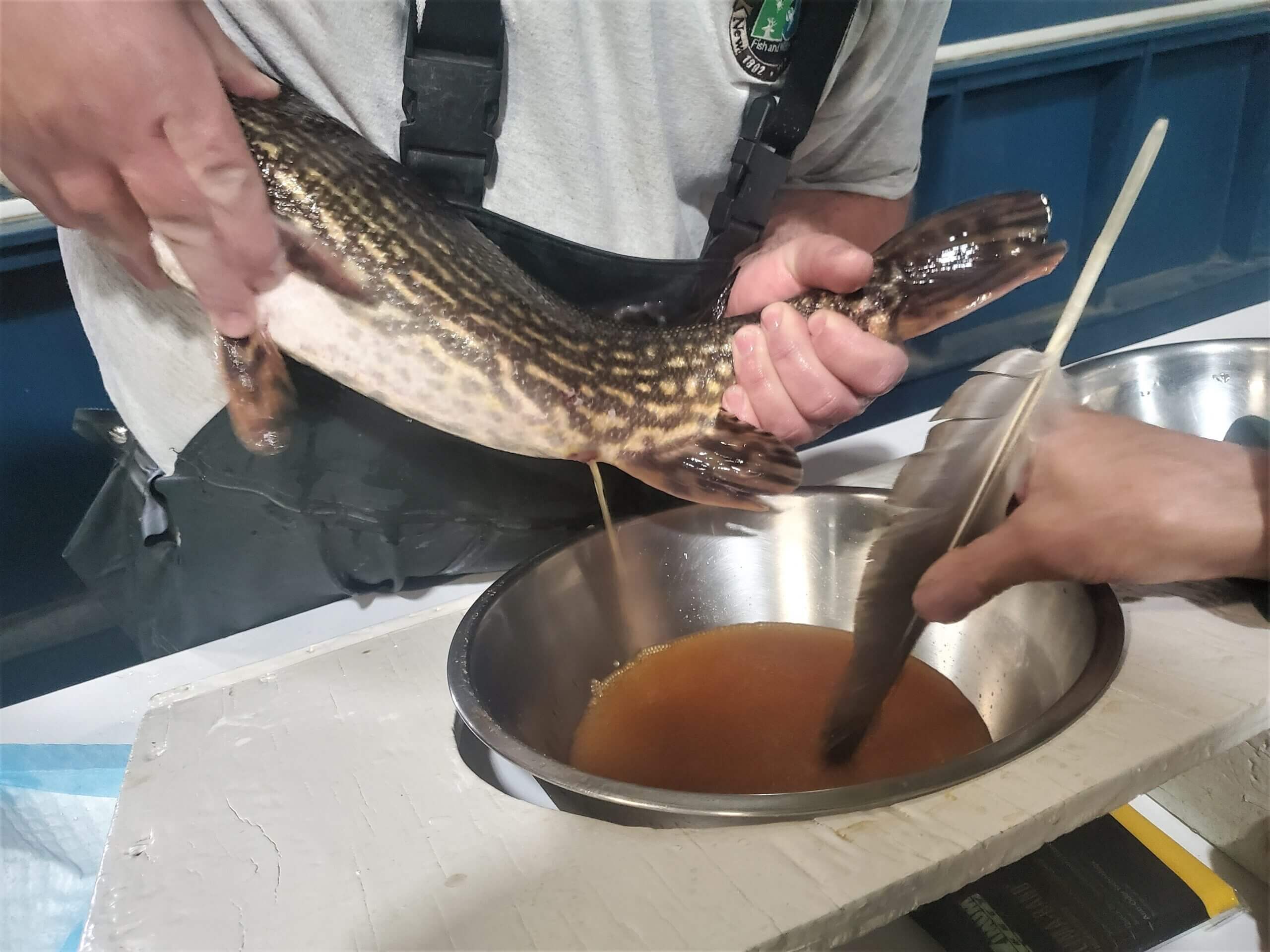
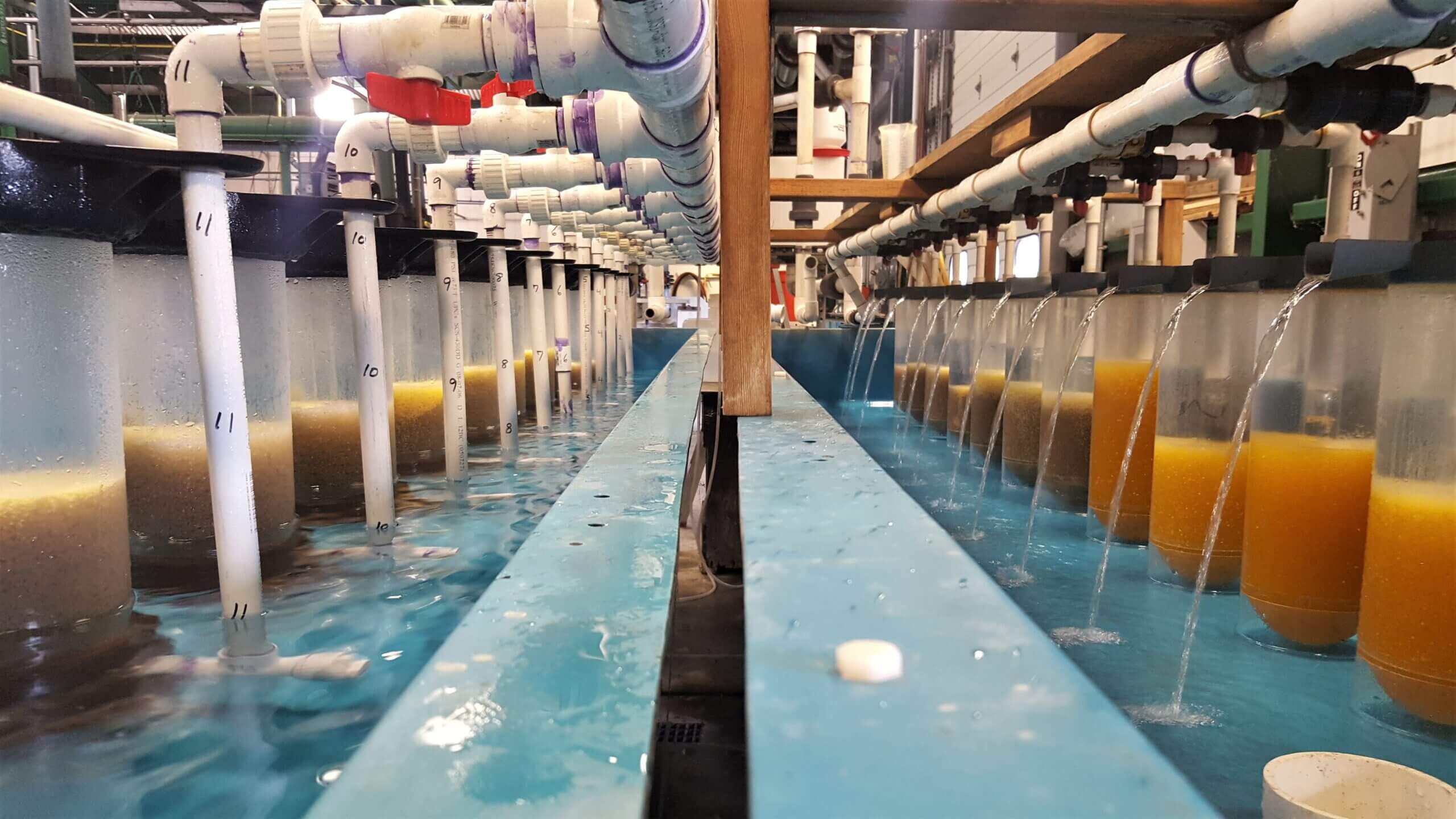
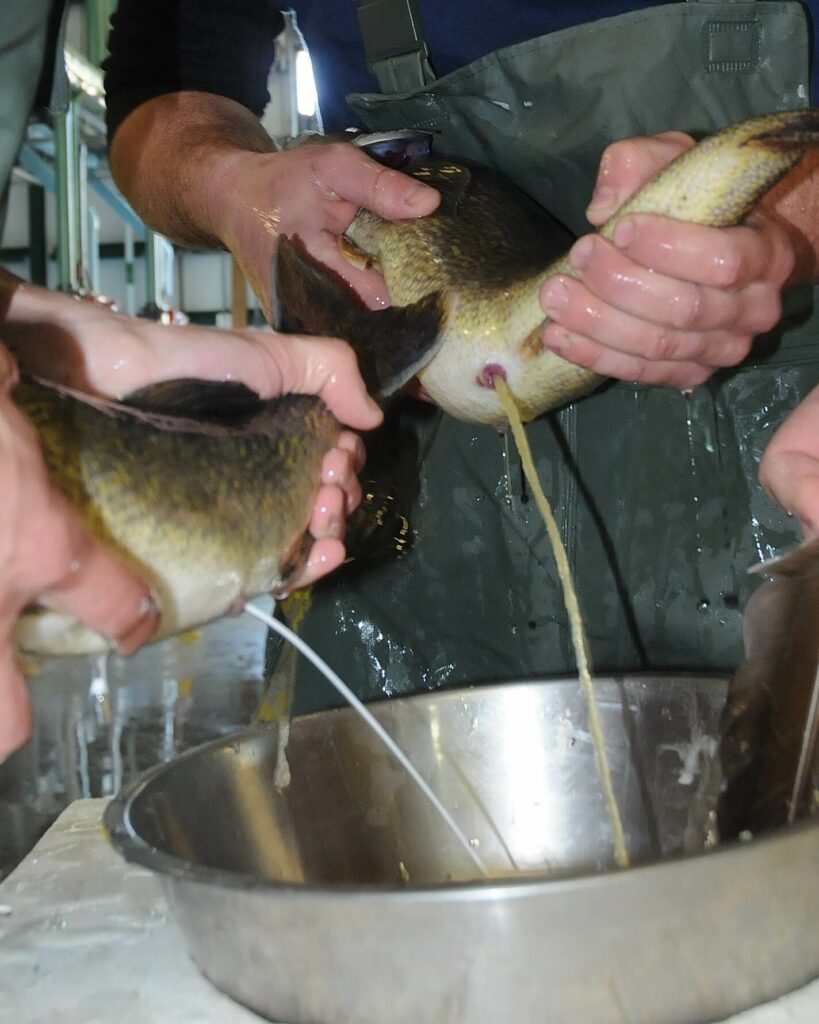
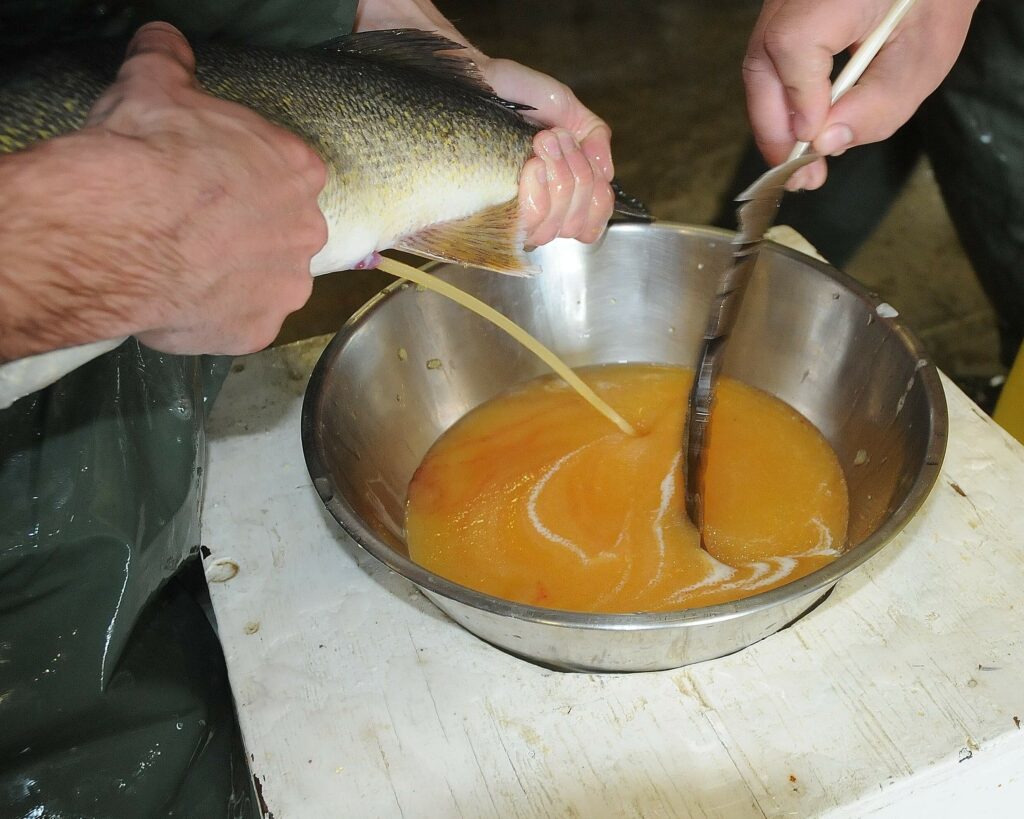
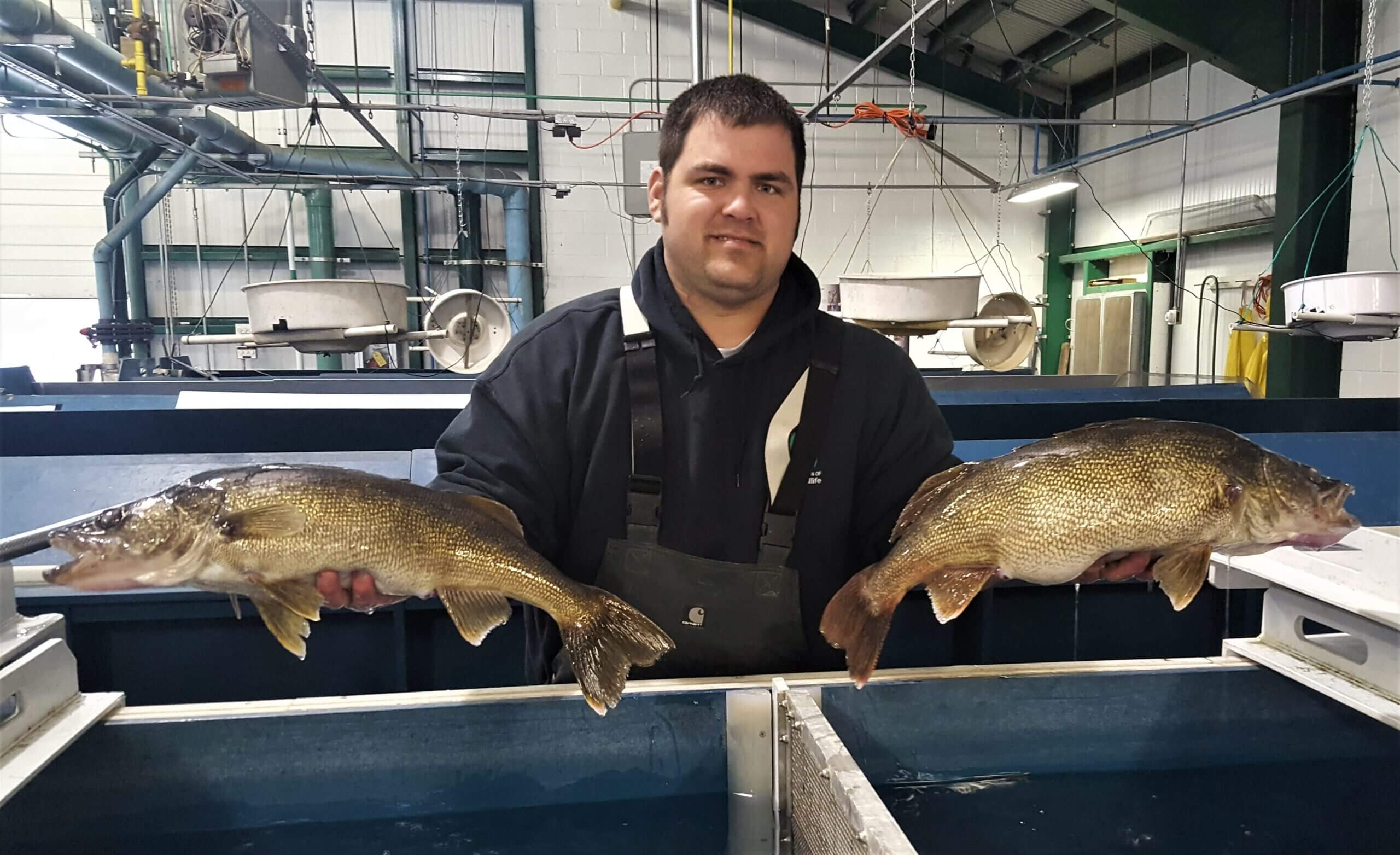
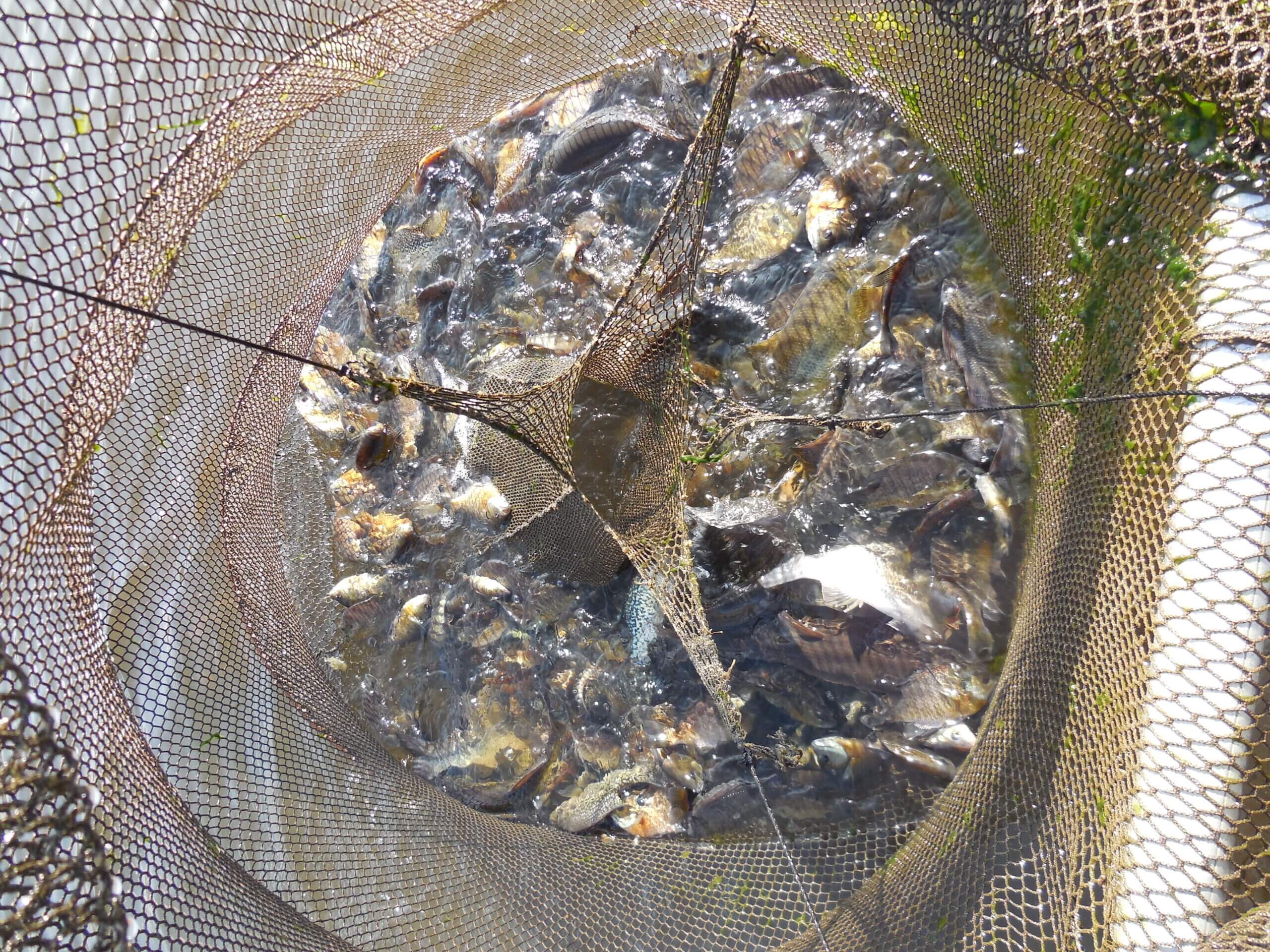
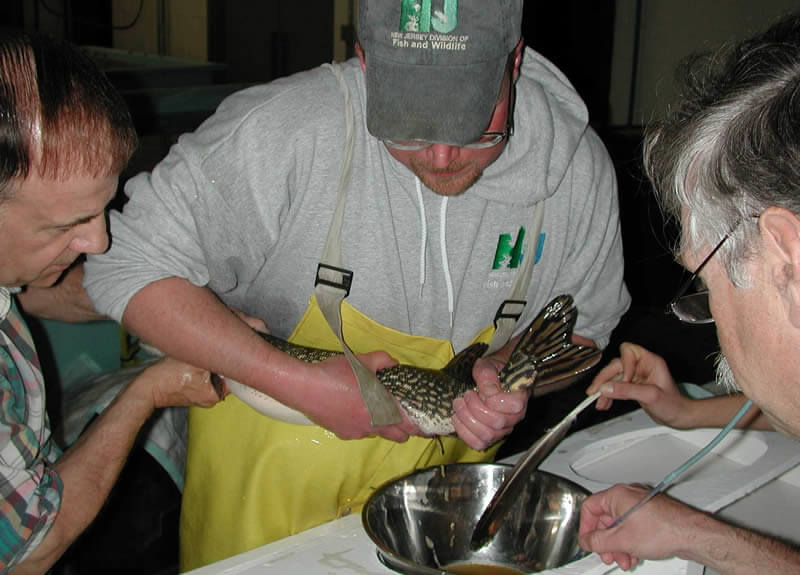
 Official Site of The State of New Jersey
Official Site of The State of New Jersey

